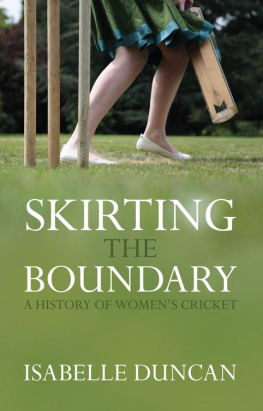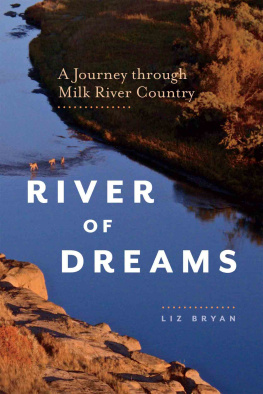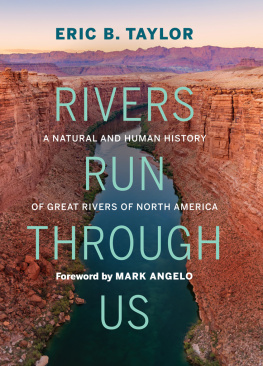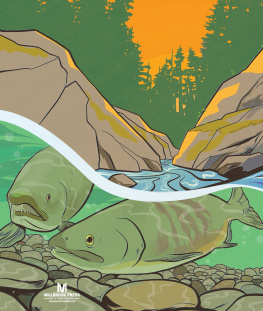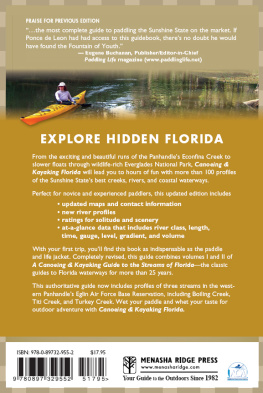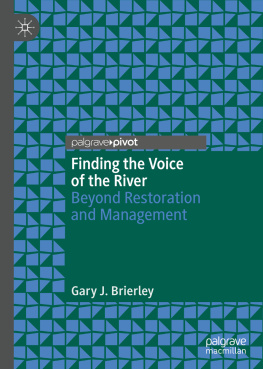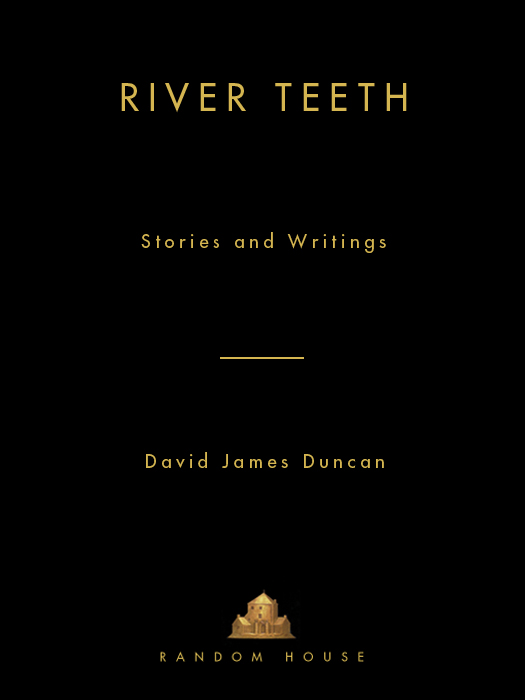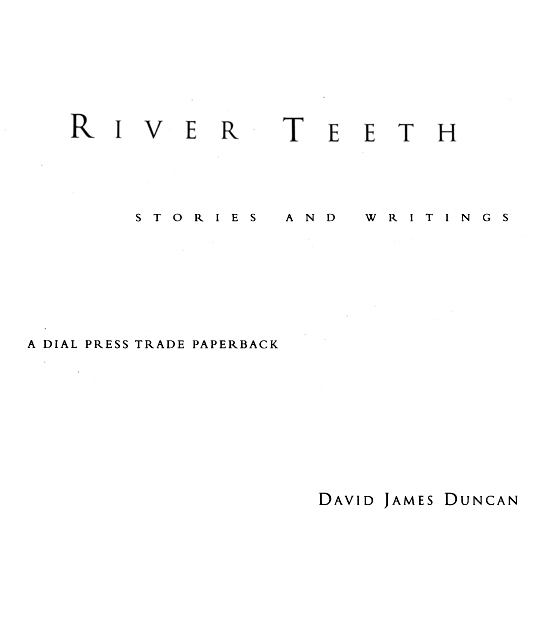RIVER TEETH
A Dial Press Trade Paperback Book
PUBLISHING HISTORY
Doubleday hardcover edition published June 1995
Bantam trade paperback edition / July 1996
Dial Press Trade Paperback edition / September 2006
Published by
The Dial Press
A Division of Random House, Inc.
New York, New York
Earlier versions of some of the pieces in this book appeared in the following publications: River Teeth, Red Coats, Rose Vegetables, A Streetlamp in the Netherlands and Giving Normal the Finger appeared in the anthology edgewalking on the western rim, published by One Reel Productions and Sasquatch Press. The author and publisher gratefully acknowledge permission to reprint them here. River Teeth and Red Coats also appeared in Pacific Northwest. First Native, Northwest Passage and Not Rocking the Boats appeared in Grays Sporting Journal. Northwest Passage also appeared in Left Bank. Molting appeared in Whitefish. Lighthouse appeared in Zyzzyva. Her Idiots appeared in The North American Review. The Mickey Mantle Koan appeared in Harpers.
The excerpt from The Man on the Dump from Collected Poems by Wallace Stevens, copyright 1942 by Wallace Stevens, is reprinted by permission of Alfred A. Knopf Inc.
All rights reserved
Copyright 1995 by David James Duncan
Library of Congress Catalog Number: 94-47570
The Dial Press and Dial Press Trade Paperbacks are registered trademarks of Random House, Inc., and the colophon is a trademark of Random House, Inc.
eISBN: 978-0-440-33651-8
www.dialpress.com
v3.1
Contents
Italics indicate fiction
R IVER T EETH:
A D EFINITION
When an ancient streamside conifer falls, finally washed or blown from its riverbank down into the water, a complex process of disintegration begins. The fallen tree becomes a naked log, the log begins to lead a kind of afterlife in the river, and this afterlife is, in some ways, of greater benefit to the river than was the original life of the tree.
A living tree stabilizes riverbanks, helps cool water temperatures, provides shade and cover for fish, shelter for mammals and birds. But fallen trees serve some of the same purposes, and other crucial ones besides. The gradual disintegration of a log in a streambed creates a vast transfusion of nutrientsA slow forest to river feast reaching from the saprophytic bottom of the food chain to the predatory, fly-casting, metaphor-making top. Downed trees are also part of a rivers filtration system: working in concert in logjams, they become flotsam traps; mud, leaf and carcass traps; Styrofoam, disposable-diaper and beer-can traps. And theyre a key element in river hydraulics: a log will force current down, digging a sheltering pocket or spawning bed for trout or salmon; over, creating a whitewater spill that pumps life-giving oxygen into the stream; or around, sometimes digging the salmonids version of a safe room with a view, the undercut bank.
On the forest streams I know bestthose of the Oregon Coast Range clearcuts, tree farms and remnant strips of rainforestthe breakdown of even a five- or six-hundred-year-old river log takes only a few decades. Tough as logs are, the grinding of sand, water and ice are relentless. Within a decade or two any drowned conifer but cedar turns punk, grows waterlogged and joins the rocks and crayfish as features of the rivers bottom. I often glance down at my feet while fishing and see that the rock Im standing on is really the top of a gigantic log sunk and buried in gravel and sand. And even after burial, decomposition continues. The log breaks into filaments, the filaments become gray mush, the mush becomes mud, washes downriver, comes to rest in side channels. The side channels fill and gradually close. New trees sprout from the fertile muck. The cycle goes on.
There are, however, parts of every drowned tree that refuse to become part of this cycle. There is, in every log, a series of cross-grained, pitch-hardened masses where long-lost branches once joined the trees trunk. Knots, theyre called, in a piece of lumber. But in the bed of a river, after the parent log has broken down and vanished, these stubborn masses take on a very different appearance, and so perhaps deserve a different name. River teeth is what we called them as kids, because thats what they look like. Like enormous fangs, often with a connected, cross-grained root. It took me awhile to realize, when I found my first, that it had once been part of a tree. Having grown up around talk of headwaters and river mouths, it was easier for me to imagine it having washed loose from a literal rivers jaw than having once joined a branch to an evergreen.
I dont know how long these teeth last, but even on the rainy coast Id guess centuries: you sense antiquity when you heft one. Because their pitch content is so high, and hardened pitch outlasts the grainy wood fiber, the oldest teeth lose much of their resemblance to wood. Some look like Neolithic hand tools, others like mammalsminiature seals, otters, manatees. Still others resemble art objectssomething intelligently worked, not just worn. And to an extent this is what they become. There is life in rivers, and strength; there are countless grinders and sanders: in a relic the waters have shaped so long, why wouldnt we begin to glimpse the rivers mind and blind artistry?
With my trees, logs and river in place, Id like to piece together a metaphor: our present-tense human experience, our lives in the inescapable present, are like living trees. Our memory of experience, our individual pasts, are like trees fallen in a river. The current in that river is the passing of time. And a storya good, shared storyis a transfusion of nutrients from the old river log of memory into the eternal now of life. But as the current of time keeps flowing, the aging log begins to break down. Once-vivid impressions begin to rot. Years run together. We try to share, with an old friend or spouse, some memorable past experience and end up arguing instead about details that dont jibe. Chunks of the log begin to vanish completely. Someone approaches us in a crowd, his face lights up, he says his name, tells us of a past connectionand we shake his hand and grin through our horror, unable to place him at all. Some of us realize, after being endlessly corrected, that there are portions of our pasts we can no longer weave into accurate narratives. Others of us realize, after sharing the same accurate narratives for decades, that we have somehow talked our allotment of stories to death, that no one listens any longer, that when we tell these old tales the room fills with a dark water and our listeners eyes glaze. So we stop telling them. We let them decompose. The last filaments of memory become gray mush, the mush becomes mud, the mud washes downriver. New life, and new stories, sprout from the silence.
There are, however, small parts of every human past that resist this natural cycle: there are hard, cross-grained whorls of memory that remain inexplicably lodged in us long after the straight-grained narrative material that housed them has washed away. Most of these whorls are not stories, exactly: more often theyre self-contained moments of shock or of inordinate empathy; moments of violence, uncaught dishonesty, tomfoolery; of mystical terror; lust; preposterous love; preposterous joy. These are our river teeththe time-defying knots of experience that remain in us after most of our autobiographies are gone.




